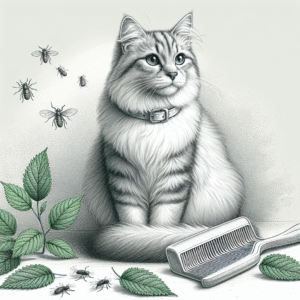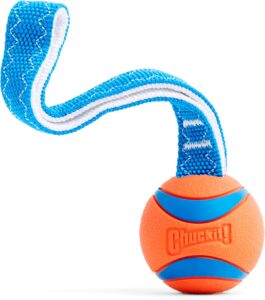
Cats are known for their independence, cleanliness, and distinct personalities. A crucial aspect of ensuring a cat’s well-being and happiness is providing them with a suitable litter box. While the selection of the right litter box and litter type is essential, the placement of the litter box is equally important. An optimally placed litter box can significantly impact a cat’s comfort, health, and overall happiness. In this article, we will explore the factors to consider when choosing the best location for a litter box and how proper placement can contribute to a happy feline friend.
Understanding Feline Behavior
To determine the best location for a litter box, it’s important to understand some basic feline behaviors and preferences. Cats are territorial animals that value privacy and a sense of security. They are also creatures of habit, preferring routine and consistency in their environment. Additionally, cats have a keen sense of smell and hearing, which can influence their choice of litter box location.
Factors to Consider for Litter Box Placement
Privacy and Security
Cats prefer to have a private and secure location for their litter box. Placing the litter box in a quiet, low-traffic area of the home can help your cat feel more comfortable when using it. Avoid placing the litter box in busy areas such as hallways, entryways, or near loud appliances like washing machines or dryers.
Accessibility and Convenience
The litter box should be easily accessible to your cat. If you have a multi-story home, consider placing a litter box on each floor to avoid forcing your cat to travel long distances to reach it. Ensure that the litter box is not obstructed by furniture or other objects, making it easy for your cat to enter and exit.
Avoiding Trapped Sensations
Cats do not appreciate feeling trapped or cornered. Avoid placing the litter box in tight spaces or areas where your cat may feel cornered. Ideally, the litter box should have multiple exit routes, allowing your cat to escape if they feel threatened or uncomfortable.
Quiet Environment
Cats have sensitive hearing and are often startled by loud noises. Placing the litter box in a quiet area, away from noisy household activities, can help your cat feel more at ease. Avoid placing the litter box near loud appliances or in rooms with frequent commotion.
Common Mistakes in Litter Box Placement
Even well-intentioned cat owners can make placement mistakes that may deter their cats from using the litter box. Here are some common pitfalls to avoid:
Near Food and Water
Cats are instinctively clean animals and prefer to keep their eating and elimination areas separate. Placing the litter box too close to food and water dishes can discourage your cat from using it. Ensure there is adequate distance between the litter box and feeding areas.
Hidden or Hard-to-Reach Locations
While privacy is important, placing the litter box in a hidden or difficult-to-reach location can be problematic. Cats should have easy access to the litter box at all times. Avoid placing it in areas that require navigating obstacles or in remote corners of the home.
High-Traffic Areas
Placing the litter box in high-traffic areas can make your cat feel exposed and vulnerable. Busy hallways, entryways, or near frequently used doors are not ideal locations. Opt for more secluded spots to provide a sense of security.
Special Considerations
Multi-Cat Households
In households with multiple cats, it’s important to provide enough litter boxes to avoid territorial disputes. A general rule of thumb is to have one litter box per cat, plus one extra. This ensures that each cat has access to a clean and available litter box at all times. Spread the litter boxes throughout the home to prevent resource guarding.
Elderly or Disabled Cats
Older or disabled cats may have difficulty accessing litter boxes with high sides or located on upper floors. Consider providing litter boxes with low entry points and placing them on the main level of the home for easier access.
Creative Solutions for Limited Spaces
For cat owners with limited space, finding an optimal litter box location can be challenging. Here are some creative solutions:
Multi-Function Furniture
Consider furniture pieces designed to hide litter boxes, such as litter box cabinets or benches. These pieces can blend seamlessly into your home decor while providing a discreet and accessible location for the litter box.
Vertical Space Utilization
If floor space is limited, consider utilizing vertical space. Cat trees or shelves with integrated litter box compartments can provide an elevated and private spot for your cat to do their business.
Maintaining a Clean and Inviting Litter Box
No matter how well the litter box is placed, it’s essential to maintain its cleanliness to encourage regular use. Here are some tips for keeping the litter box clean and inviting:
Regular Cleaning
Scoop the litter box at least once a day to remove waste and prevent odors. Regularly change the litter and clean the box with mild soap and water to ensure a fresh environment for your cat.
Odor Control
Use high-quality litter that provides effective odor control. Consider using baking soda or charcoal-based products to help neutralize odors. Proper ventilation in the litter box area can also help reduce lingering smells.
Litter Box Liners
Litter box liners can make cleaning easier and help keep the box itself cleaner. However, not all cats like them, so it’s important to ensure your cat is comfortable with their use.
Conclusion
The placement of a litter box is a crucial factor in ensuring a happy and healthy cat. By considering your cat’s natural behaviors, providing privacy and accessibility, and maintaining cleanliness, you can create an optimal environment for your feline friend. Avoid common placement mistakes and consider special needs for multi-cat households or elderly cats. With thoughtful litter box placement, you’ll contribute significantly to your cat’s happiness and well-being.
Remember, each cat is unique, and their preferences may vary. Observe your cat’s behavior and make adjustments as needed to find the perfect litter box location. A happy cat is a healthy cat, and a well-placed litter box is an essential part of that equation.
#ChatGPT assisted in the creation of this article.








